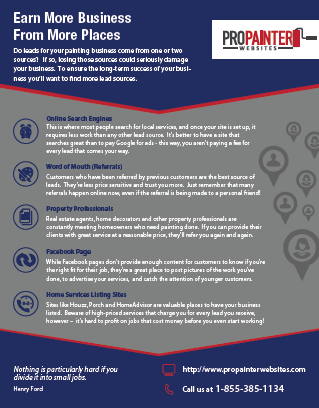Seasonal Factors To Consider For Commercial Exterior Painting: What You Required To Know
Seasonal Factors To Consider For Commercial Exterior Painting: What You Required To Know
Blog Article
Material By-Aguilar Browne
When you're planning a business exterior paint project, seasonal variables can make or break your outcomes. You'll intend to take into consideration how temperature level and moisture impact paint application and drying times. Picking the right period can ensure your paint sticks properly and lasts much longer. But which periods are genuinely the most effective for this type of work? Let' commercial kitchen paint out the crucial elements that can affect your project's success.
The Impact of Temperature on Paint Application
When you're planning an industrial exterior paint job, the temperature level can substantially influence just how well the paint adheres and dries out.
Preferably, you want to paint when temperature levels vary between 50 ° F and 85 ° F. If it's as well chilly, the paint may not heal effectively, leading to issues like peeling off or breaking.
On the flip side, if it's also warm, the paint can dry out too rapidly, preventing appropriate bond and causing an uneven surface.
You must also think about the moment of day; early morning or late afternoon provides cooler temperature levels, which can be extra favorable.
Constantly inspect the supplier's recommendations for the details paint you're utilizing, as they commonly give assistance on the ideal temperature level range for ideal results.
Humidity and Its Effect on Drying Times
Temperature isn't the only ecological variable that affects your industrial external painting task; moisture plays a significant duty too. High moisture levels can slow down drying times significantly, influencing the overall high quality of your paint work.
When the air is saturated with dampness, the paint takes longer to treat, which can lead to problems like poor bond and a higher threat of mildew growth. If you're repainting on a particularly humid day, be prepared for prolonged delay times between layers.
It's essential to check local weather conditions and plan accordingly. Ideally, go for humidity levels between 40% and 70% for ideal drying.
Keeping these factors in mind ensures your job stays on track and supplies an enduring coating.
Best Seasons for Commercial Outside Paint Projects
What's the best season for your business outside painting projects?
Get Source and very early fall are usually your best bets. Throughout helpful resources , temperatures are mild, and humidity degrees are frequently lower, producing perfect conditions for paint application and drying.
Avoid summer's intense heat, which can cause paint to dry too swiftly, leading to poor attachment and finish. In a similar way, winter months's chilly temperatures can impede proper drying and curing, running the risk of the longevity of your paint job.
Go for days with temperatures in between 50 ° F and 85 ° F for optimal outcomes. Keep in mind to check the neighborhood weather forecast for rain, as damp problems can ruin your project.
Preparation around these elements ensures your paint job runs smoothly and lasts much longer.
Conclusion
Finally, preparing your commercial outside painting tasks around seasonal considerations can make a considerable distinction in the end result. By organizing you could try these out during the optimal temperature levels and humidity degrees, you'll make sure better bond and drying times. Bear in mind to keep an eye on regional weather forecasts and choose the correct time of year-- springtime and very early fall are your best choices. Taking these actions will assist you accomplish a long lasting and expert coating that lasts.
